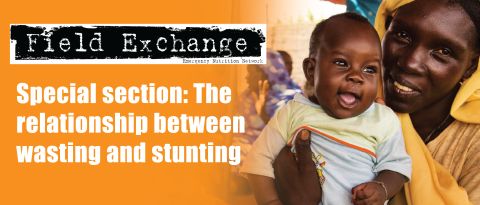Exploring the relationships between wasting and stunting among a cohort of children under two years of age in Niger
Kohlmann K, Sudfeld C, Garba S, Guindo O, Grais R and Isanaka S (2021) Exploring the relationships between wasting and stunting among a cohort of children under two years of age in Niger. BMC Public Health 21, 1713. https://doi.org/10.1186/s12889-021-11689-6
Research Snapshot
Childhood wasting and stunting continue to present a large public health burden globally with approximately 7% of children under-five years being wasted and 22% stunted in 2020. Wasting and stunting can co-exist within the same child (concurrent WaSt) and these two forms of undernutrition may share common risk factors. Despite the growing evidence highlighting the relationship between wasting and stunting and the increased risk of mortality for children with concurrent WaSt, the two forms of undernutrition continue to be treated separately in much research, programming and policymaking.
In this paper, the authors analysed data from a longitudinal birth cohort in Niger to explore the risk factors for wasting and stunting while also assessing the relationship between wasting and stunting over time. The study location was a rural area of south-central Niger with data coming from an existing vaccine trial. In total, 6,567 infants had growth monitoring every four weeks from early infancy until two years and birthweight was recorded.
The authors found the lowest prevalence of wasting in the cohort was in the first six months of life (5-10%) increasing to 14-16% from 9-18 months of age. Peak prevalence of concurrent WaSt (12.5%) was at 15 months, mirroring wasting prevalence trends. At 24 months of age, 14% of children were wasted, 80% were stunted and 12% had concurrent WaSt. Compared to normal birthweight infants, low birthweight infants had a higher prevalence of stunting throughout the study duration and they also experienced a higher prevalence of wasting and concurrent WaSt from 10 months of age onwards.
The risk factors common to wasting and stunting at six and 24 months of age included maternal short stature, male sex and low birthweight. Common protective factors included higher maternal body mass index and household wealth. Being wasted at age six and 24 months was predicted by earlier episodes of wasting, stunting and concurrent WaSt (between two to 21 months). Being stunted at age six and 24 months was similarly predicted by early experiences of stunting and concurrent WaSt but was only predicted by prior wasting episodes after six months of age.
Together, this data adds to the growing literature describing the bi-directional relationships between wasting and stunting over time. The findings further illustrate the importance of integrated programming to address both forms of undernutrition together. Of particular importance is the heightened risk of wasting, stunting and concurrent WaSt for those born low birthweight. To address this, the authors suggest an emphasis on pre-pregnancy and pregnancy interventions as well as a continued focus on women’s nutrition across the life cycle to reduce the risk of maternal short stature and the subsequent risk of low birthweight.


